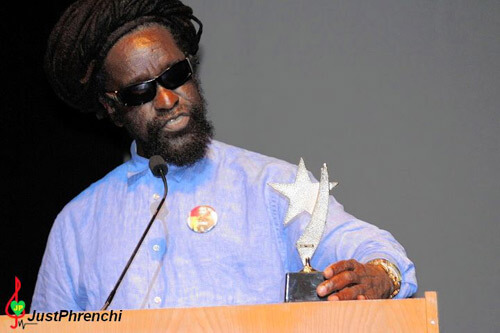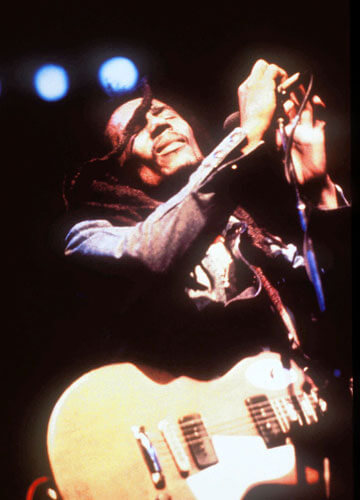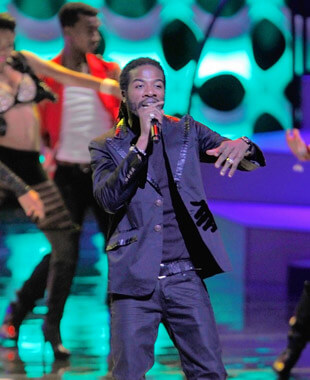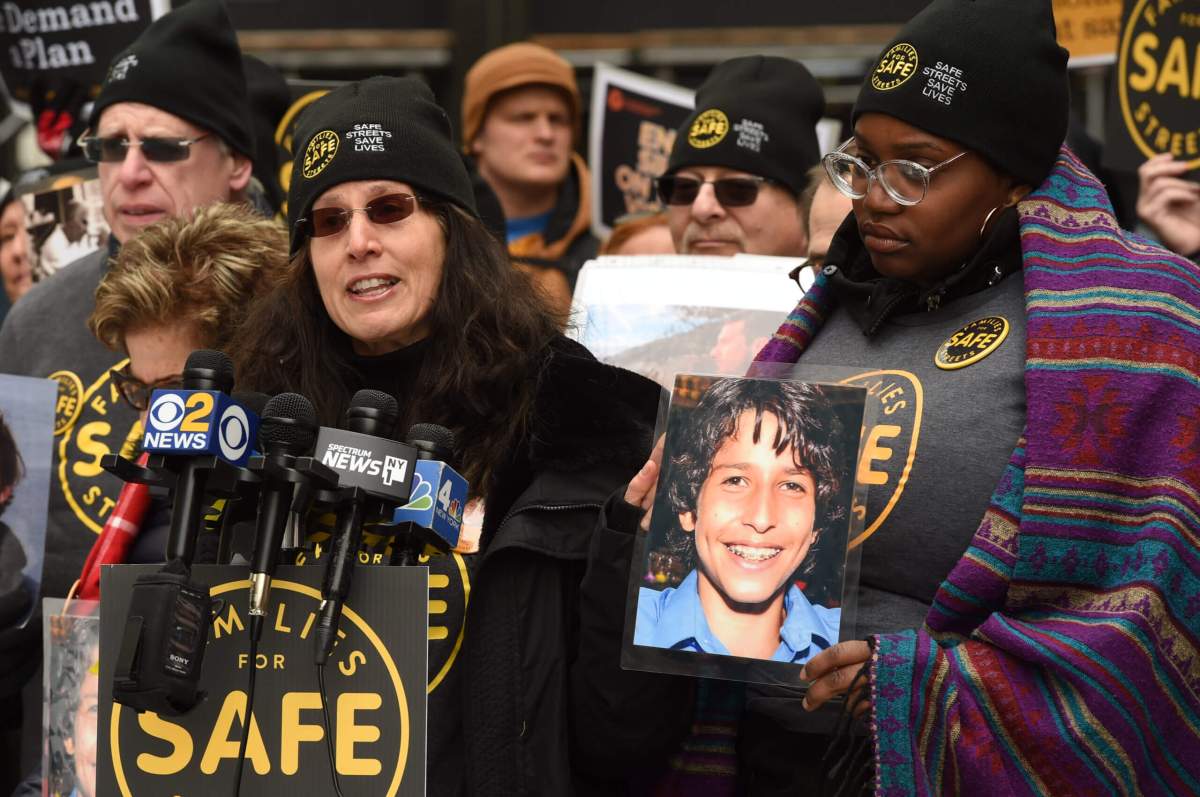Derrick “Duckie” Simpson AKA the Gong Gong Gullie who allegedly founded Black Uhuru, the first reggae group to win the category and first Grammy award in 1984 accepted a lifetime achievement honor during the 32nd annual International Reggae & World Music Awards.
Introduced as the recipient of “million-selling” albums, Simpson quickly disputed that claim saying he had no evidence of that accomplishment but thanked IRAWMA founder Ephraim Martin for his generosity in presenting him the star-topped golden trophy.
“I have to big-up the staff and organizers of this award,” Simpson said.
Simpson along with Michael Rose and Puma Jones made history with their “Anthem” album when they were named the first winners of the music industry’s most prestigious award, a miniature, golden gramophone.
Although, the original trio in the early 1960s included a trio comprised of Euvin “Don Carlos” Spencer, Rudolph Garth Dennis and Simpson, various groupings and reformations represented the Swahili-named configuration.
At a latter juncture following the Grammy win, Junior “One Blood” Reid led the group.
Throughout its more than 50 years, Simpson has maintained a presence.
Also distinguished during the IRAWMA were Peter Tosh and Jacob Miller who Martin credits with inspiring him to create the annual which debuted the same year Marley died. Marley is revered to be the first, Caribbean superstar.
For a list of winners log onto www.irawma.com.
NEW BOOK RECALLS ‘WHEN DANCEHALL WAS NICE’
Lenworth Lyttle and Paul Thomas, two self-acclaimed “true 1980’s dancehall soldiers” have collaborated to compile a glossary and impressive discography they titled “In the ‘80’s Dancehall, Reggae Recall.”
Natives from the St. Ann parish in Jamaica that bred Marcus Mosiah Garvey, Burning Spear, Robert Nesta Marley and Shabba Ranks, they list lyrics, sound systems, memorable events, dancehall entertainers, ‘riddims’ and pay tribute to past dancehall legends.
The pair takes readers through a journey to discover or relive the heydays of the sub-culture by including a dancehall dictionary and also packaging two CDs that amplify their platitudes and claim that the 80’s represent the “best decade in the history of dancehall.”
Without employing rebuke or attention to a perception of decline since that decade and seemingly a global perspective that a proliferation of violence or danger dominates the dancehall culture the book overstates the fact that three decades ago “When Dancehall was nice” the reggae genre was completely dominated by Jamaican talents.
“It is our deep passion for dancehall music and for its culture that has made us even more aware of the importance of preserving our history through meaningful literature.”
Born and raised in Jamaica, they grew up during the era they wrote about and allegedly both immersed themselves in the subculture by getting involved with the local sound systems in their communities “with the hope of someday chanting our way to stardom.”
“This era is indeed the true cornerstone of the globalization of dancehall music, leading it to becoming this great phenomenon we are now witnessing that has crossed every continent around the world.”
A description of the best decade in dancehall begins with the definition and eases into honor roll naming worthy soundmen from the era.
A chapter titled “Out of many one Sound System” puts a spin on the motto of the nation that birthed the beat bred from reggae.
Black Scorpio, Downbeat The Ruler, Echo Vibration, Gemini Disco, Jack Ruby Hi power, Jah love Muzik, Killamanjaro, Arrows Hi Fi, Stone Love, King Tubbys, King Jammy Super, Sir Coxsone, Stereo One, Metro Media, Volcano, Taurus international Wah Dat Disco and Youthman Promotion skims the surface of prominent pioneering sound system operators.
Celebrated trailblazers: Sugar Minott, U-Roy, Yellowman, Tiger, Cocoa Tea, Charlie Chaplain, Barrington Levy Frankie Paul, Flourgon, General Trees, Louie Rankin gets big ups, shout-outs and irie mentions.
Little-known contributors who preceded MTV-spotlighted talents such as Shabba Ranks, Cobra, Beenie Man, Ninja Man, Lt. Stitchie, Papa San, Supercat, Sister Carol, Tony Rebel, Bounty Killer, Patra, Tanya Stevens, Lady Saw, Shelly Thunder, Shinehead, Singing Melody, Sanchez, Major Mackerel, Chaka Demus, Michigan & Smiley Professor Nuts also get kudos.
Official dancehall photographer Marvin “Horseman” Pitterson provides snapshots of the biggest to the smallest deejays in the industry.
Incidentally, Tiny & Weng Weng are the recorded little people couple to take that claim.
With kudos to everyone from the peanut and sugar cane vendors, the Crown & Anchor Man (dice game), style and fashion, sound clashes to mentions of Sting — the annual dancehall, after-Christmas showcase first stage in 1984 – this book delves deep into the roots of reggae’s most successful offshoot.
Brief anecdotes and personal reflections add to the allure of this easy-read, dedication to the island’s dance music.
Although the St. Ann’s scribes did not fulfill their desire “of chanting their way to stardom,” perhaps this 265-page, hard cover tribute will be their vehicle to amplify the anthems that ruled the dancehall.
For more detail check www.reggaezon.com
Catch You On The Inside!



















